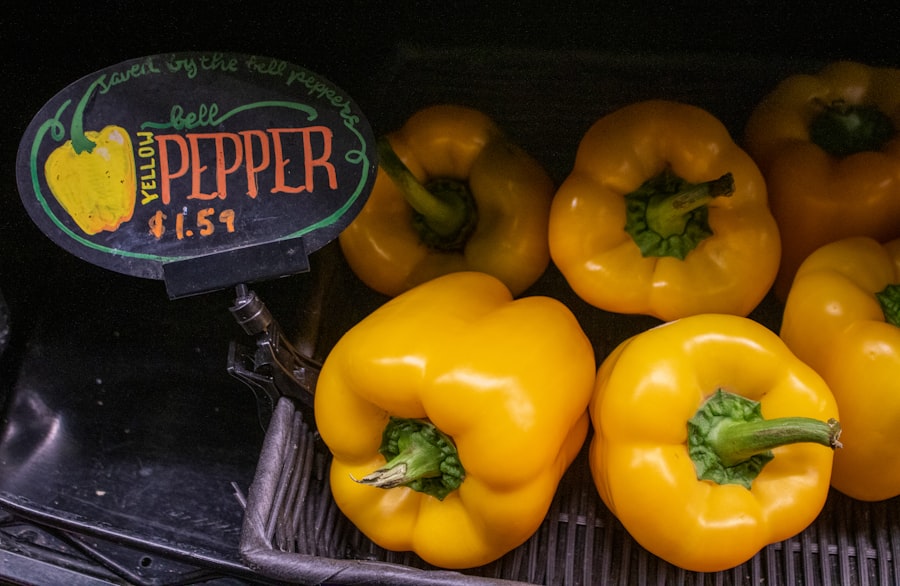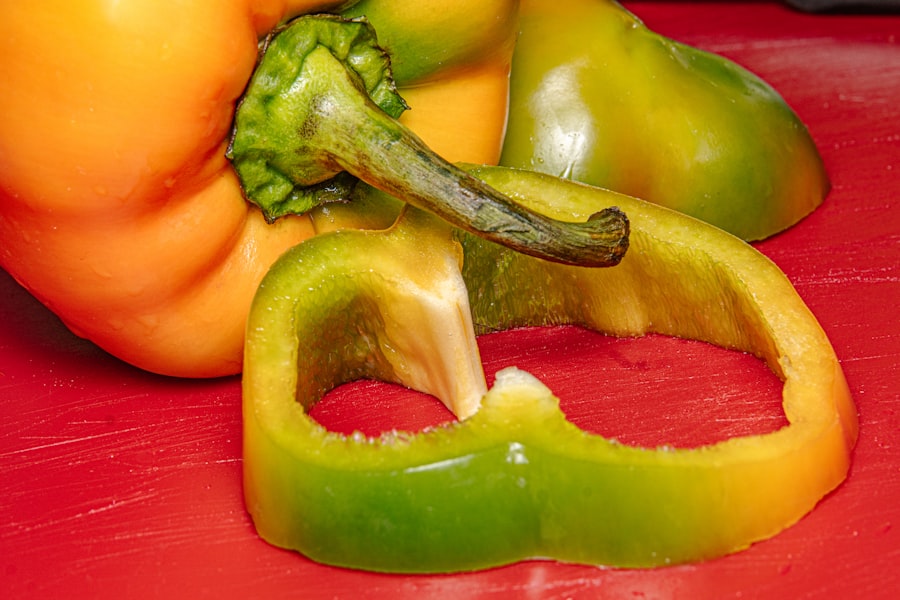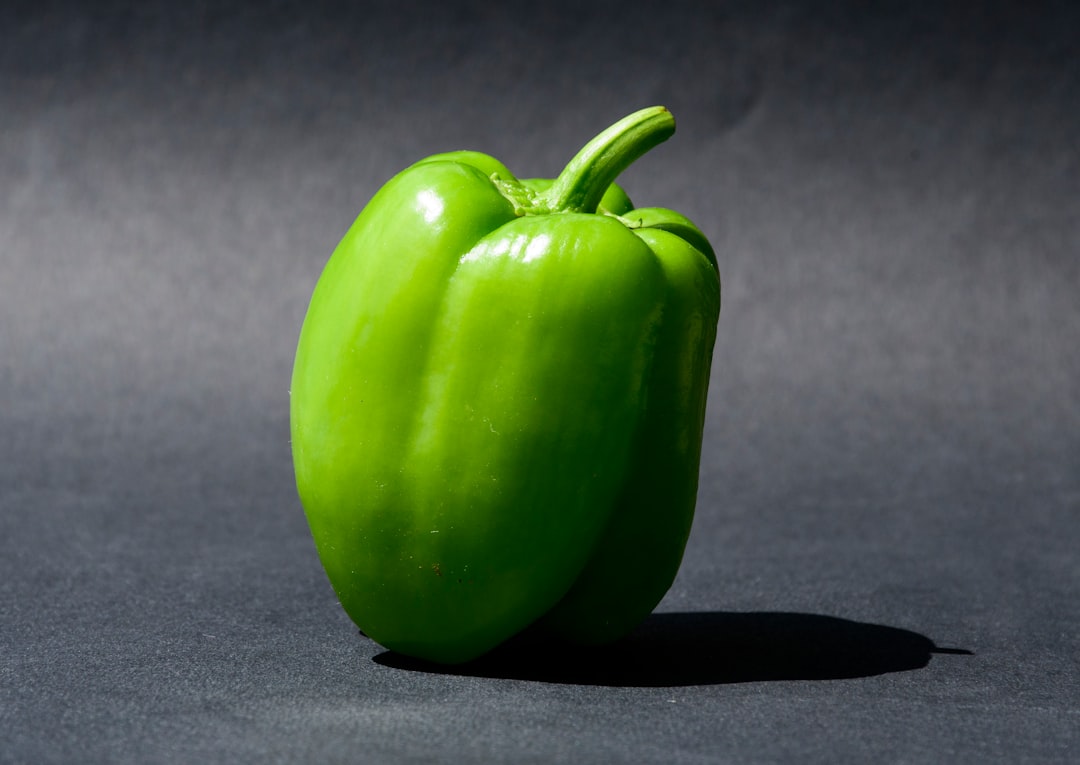When you think about managing arthritis, your mind might immediately jump to medications or physical therapy. However, the foods you consume can significantly impact your symptoms. Green peppers, a common ingredient in many dishes, have been a topic of discussion among those seeking relief from arthritis pain.
You may wonder how something as innocuous as a green pepper could potentially exacerbate your condition. The answer lies in the complex relationship between certain foods and inflammation in the body. Green peppers belong to the nightshade family, which also includes tomatoes, potatoes, and eggplants.
For some individuals, particularly those with arthritis, these vegetables can trigger inflammatory responses. While not everyone reacts negatively to nightshades, it’s essential to pay attention to how your body responds after consuming them. If you notice increased joint pain or swelling after eating green peppers, it may be time to reconsider their place in your diet.
Understanding this link can empower you to make informed choices that could lead to improved well-being.
Key Takeaways
- Green peppers contain solanine, a compound that may exacerbate arthritis symptoms in some individuals.
- Nightshade vegetables, including green peppers, tomatoes, and eggplants, can contribute to inflammation and joint pain in arthritis sufferers.
- Check food labels for ingredients like paprika, cayenne, and bell peppers, which are all derived from green peppers.
- Substitute green peppers with non-nightshade vegetables like cucumbers, zucchinis, and carrots in your cooking.
- When dining out, communicate your dietary restrictions to the restaurant staff to avoid green peppers in your meals.
The Role of Nightshade Vegetables in Arthritis Symptoms
Nightshade vegetables, including green peppers, contain alkaloids that some studies suggest may contribute to inflammation in susceptible individuals. These compounds can interfere with nerve function and may lead to increased pain sensitivity. If you have arthritis, you might find that consuming nightshades exacerbates your symptoms, leading to discomfort and reduced mobility.
It’s crucial to recognize that not everyone will experience these effects; however, if you do, it’s worth exploring dietary adjustments. In addition to alkaloids, nightshades also contain solanine, a compound that can be problematic for some people. Solanine is thought to affect calcium metabolism and may contribute to joint pain and stiffness.
If you’re struggling with arthritis symptoms, it’s beneficial to monitor your intake of nightshade vegetables and observe any changes in your condition. By doing so, you can better understand how these foods impact your health and make necessary adjustments to your diet.
Identifying Green Pepper in Foods and Recipes

Green peppers are a versatile ingredient found in various cuisines around the world. They add a crisp texture and a slightly bitter flavor to dishes, making them a popular choice in salads, stir-fries, and sauces. However, if you’re trying to avoid them due to arthritis concerns, it’s essential to know where they might be hiding in your meals.
You may find green peppers in unexpected places, such as pre-packaged salads, frozen vegetable mixes, or even certain sauces. When cooking at home, it’s relatively easy to identify and exclude green peppers from your recipes. However, when dining out or purchasing pre-made meals, it can be more challenging.
Always read ingredient lists carefully and don’t hesitate to ask restaurant staff about the contents of a dish. Being proactive about identifying green peppers in foods will help you maintain control over your diet and manage your arthritis symptoms more effectively.
Alternative Ingredients to Replace Green Peppers in Cooking
| Alternative Ingredients | Benefits | Usage |
|---|---|---|
| Yellow Bell Peppers | Similar flavor and texture | Raw in salads, cooked in stir-fries |
| Red Bell Peppers | Sweet flavor | Raw in dips, roasted in pasta dishes |
| Carrots | Crunchy texture | Raw in salads, cooked in soups |
| Zucchini | Mild flavor | Sautéed, grilled, or roasted |
If you’ve decided to eliminate green peppers from your diet, you might be wondering what alternatives you can use in your cooking. Fortunately, there are several options that can provide similar textures and flavors without the potential inflammatory effects of green peppers. For instance, you might consider using zucchini or cucumbers for a refreshing crunch in salads or stir-fries.
Both vegetables are low in calories and high in nutrients, making them excellent substitutes. Another alternative is using bell peppers of different colors—red, yellow, or orange—if you find that they don’t trigger your symptoms as green peppers do. These varieties tend to be sweeter and can add a vibrant touch to your dishes.
Additionally, consider incorporating other vegetables like carrots or celery for added crunch and flavor. By experimenting with these alternatives, you can create delicious meals that align with your dietary needs while still satisfying your taste buds.
Tips for Dining Out and Avoiding Green Peppers
Dining out can pose challenges when trying to avoid specific ingredients like green peppers.
One effective strategy is to research restaurants beforehand.
Look for establishments that offer customizable menus or specialize in cuisines that typically use fewer nightshade vegetables. When you arrive at the restaurant, don’t hesitate to communicate your dietary needs clearly with the staff. Let them know about your aversion to green peppers and ask for recommendations on dishes that can be modified accordingly.
Many chefs are willing to accommodate dietary restrictions and can suggest alternatives or prepare meals without certain ingredients. By being proactive and assertive about your needs, you can enjoy dining out while staying true to your health goals.
Benefits of Eliminating Green Peppers from Your Diet

Eliminating green peppers from your diet may lead to several benefits beyond just reducing arthritis symptoms. For one, by focusing on whole foods and other vegetables that are less likely to trigger inflammation, you may find that your overall health improves. A diet rich in anti-inflammatory foods—such as leafy greens, berries, nuts, and fatty fish—can support joint health and enhance your well-being.
Moreover, avoiding green peppers can encourage you to explore new ingredients and recipes that you might not have considered before. This culinary adventure can lead to discovering new flavors and textures that not only satisfy your palate but also nourish your body. As you experiment with different foods, you may find yourself feeling more energized and less burdened by discomfort.
Recipes and Meal Ideas for Green Pepper-Free Eating
Creating delicious meals without green peppers is entirely possible with a little creativity in the kitchen.
Toss these veggies in a light soy sauce or teriyaki glaze for added flavor while keeping the dish vibrant and nutritious.
Another idea is to prepare stuffed zucchini boats filled with quinoa, black beans, corn, and spices for a satisfying meal that’s both filling and flavorful. You could also whip up a refreshing salad featuring mixed greens topped with cherry tomatoes, cucumbers, avocado, and a zesty lemon vinaigrette. These meal ideas not only keep green peppers at bay but also introduce a variety of nutrients into your diet.
How to Read Food Labels for Hidden Green Pepper Ingredients
When navigating grocery store aisles, reading food labels becomes an essential skill for avoiding hidden ingredients like green peppers. Many processed foods contain vegetable blends or sauces that may include green peppers without being explicitly listed on the front packaging. To protect yourself from unintentional consumption, always check the ingredient list on the back of the product.
Look for terms like “vegetable mix” or “salsa” that might contain green peppers among other ingredients. Additionally, be cautious with pre-packaged meals or snacks that claim to be “vegetable-based,” as they may still include nightshades as part of their formulation. By developing a habit of scrutinizing labels before purchasing items, you can better manage your diet and avoid potential triggers for arthritis symptoms.
Managing Arthritis Symptoms Through Diet and Nutrition
Diet plays a crucial role in managing arthritis symptoms effectively. By focusing on anti-inflammatory foods while avoiding potential triggers like green peppers, you can create a balanced diet that supports joint health. Incorporating omega-3 fatty acids found in fish like salmon or walnuts can help reduce inflammation throughout the body.
Additionally, consider adding spices such as turmeric and ginger to your meals; both have been shown to possess anti-inflammatory properties that may alleviate pain associated with arthritis. Staying hydrated is equally important; drinking plenty of water helps maintain joint lubrication and overall health. By prioritizing nutrition as part of your arthritis management plan, you empower yourself to take control of your symptoms.
Seeking Professional Guidance for Green Pepper Avoidance
If you’re unsure about how to eliminate green peppers from your diet effectively or need assistance in managing arthritis through nutrition, seeking professional guidance can be invaluable. A registered dietitian or nutritionist can help tailor a meal plan that meets your specific needs while ensuring you’re getting all the essential nutrients required for optimal health. These professionals can also provide insights into food substitutions and help you navigate dining out while avoiding potential triggers like green peppers.
With their expertise, you’ll gain confidence in making dietary choices that support your well-being while managing arthritis symptoms more effectively.
Staying Committed to Green Pepper Avoidance for Long-Term Arthritis Relief
Staying committed to avoiding green peppers may require effort initially but can lead to significant long-term benefits for managing arthritis symptoms. As you become more accustomed to reading labels and exploring alternative ingredients, it will become second nature over time. Remember that every small change contributes positively toward reducing inflammation and improving your quality of life.
Establishing a support system—whether through friends who share similar dietary restrictions or online communities—can also help keep you motivated on this journey. Sharing recipes and experiences with others who understand your challenges can provide encouragement as you navigate this dietary adjustment for long-term relief from arthritis symptoms. Embrace this journey toward better health; it’s an investment in yourself that can yield rewarding results over time.
If you’re considering dietary changes to help manage arthritis, you might want to think twice before adding green peppers to your meals. An article on Explore Senior Health discusses the potential impact of certain foods on arthritis symptoms, suggesting that some individuals may experience increased inflammation from nightshade vegetables like green peppers. For more insights on how diet can influence arthritis, you can read the full article on their website by following this link.
Over 60? Ditch THIS Sneaky Veggie Wrecking Digestion, Bloating, and Microbiome Balance.
FAQs
What is the connection between green peppers and arthritis?
There is no scientific evidence to support the claim that green peppers worsen arthritis symptoms. While some people may experience flare-ups after consuming certain foods, including nightshade vegetables like green peppers, this is not a universal experience for arthritis sufferers.
Are there any specific foods that can help with arthritis symptoms?
Some studies suggest that certain foods, such as fatty fish, nuts, fruits, and vegetables, may have anti-inflammatory properties that could potentially help with arthritis symptoms. However, it’s important to consult with a healthcare professional or a registered dietitian before making any significant changes to your diet.
Should I stop eating green peppers if I have arthritis?
There is no one-size-fits-all answer to this question. While some individuals with arthritis may find that avoiding nightshade vegetables, including green peppers, helps alleviate their symptoms, others may not experience any difference. It’s important to pay attention to your body’s response to different foods and consult with a healthcare professional before making any dietary changes.
Can green peppers cause arthritis?
There is no scientific evidence to suggest that green peppers or any other specific food can cause arthritis. Arthritis is a complex condition with various contributing factors, including genetics, age, and lifestyle. While diet may play a role in managing arthritis symptoms, it is not a direct cause of the condition.
What are some general dietary recommendations for arthritis sufferers?
Arthritis sufferers are often advised to maintain a balanced diet that includes plenty of fruits, vegetables, whole grains, lean proteins, and healthy fats. Some individuals may benefit from avoiding certain foods that seem to trigger inflammation, but this can vary from person to person. It’s important to work with a healthcare professional to develop a personalized dietary plan.
